Dr. Phillip Buckhaults PhD, Professor and Director of the Cancer Genetics Lab at University of South Carolina and his lab used the vaccine qPCR kits we previously published in this preprint to test a few BNT162b2 vials they have access to.
These are independent vials from the vials we have previously tested and described.
However, these are not independent qPCR tests as Dr. Buckhaults lab is using qPCR reagents we (McKernan et al) supplied to the their lab.
They tested 2 vials from 2 lots (EL-9262 & EL-9264) or 4 vials in total.
Dr. Sin Lee has performed independent validation of our qPCR primers by Sanger sequencing the PCR products derived from the qPCR assays amplifying BNT162b2. Dr. Lee has confirmed that our qPCR primers do in fact amplify the vaccine plasmid and he made his own primers flanking our assay to confirm our primer sites and predicted amplicons from our qPCR assay. Dr. Lees work did not address the quantitation of the contaminant.
The CT scores observed in South Carolina are within a few CTs of what we previously reported (1-2 million dsDNA copies/ul) with different vials (Figure 1 & 2). Further work will explore the use of qPCR kits not sourced by our lab.
It does show that dsDNA exists in vaccine vials from other states that we have not touched or tampered with. Likewise, the qPCR CT for the vax observed is in line with what we and others (Japan) have observed. The Buckhaults lab also uses a BioRad CFX 96 qPCR instrument which is the same instrument used on our study. This helps to make the CTs more comparable between labs.
This is a very important confirmation as our previous work on vials provided anonymously in the mail was critiqued as being too prone to potential tampering. The CTs we observed are within 1 CT of what others observe in the Buckhaults lab in another state (SC) with different lots (EL-9262, EL-9264). The qPCR reagents were the same. The lowest CT we have observed to date was with Dr. Simon Goddek, PhD and Dr. Randall Bock, MD (CT 15.5) on a Pfizer monovalent vial.
In summary, qPCR performed with visitors in our lab (Goddek & Bock) or with our reagents sent to other labs (Buckhaults et al) with different vials and batches are ringing in at 15.5-20 CT. This is an appreciable amount of DNA contamination regardless of what regulations have been adopted in different jurisdictions and more work is needed to understand its clinical significance given this DNA contaminant is likely packaged in transfection ready LNPs.
Buckhaults lab qPCR results below in Figure 1, 2, & Table 1,2)
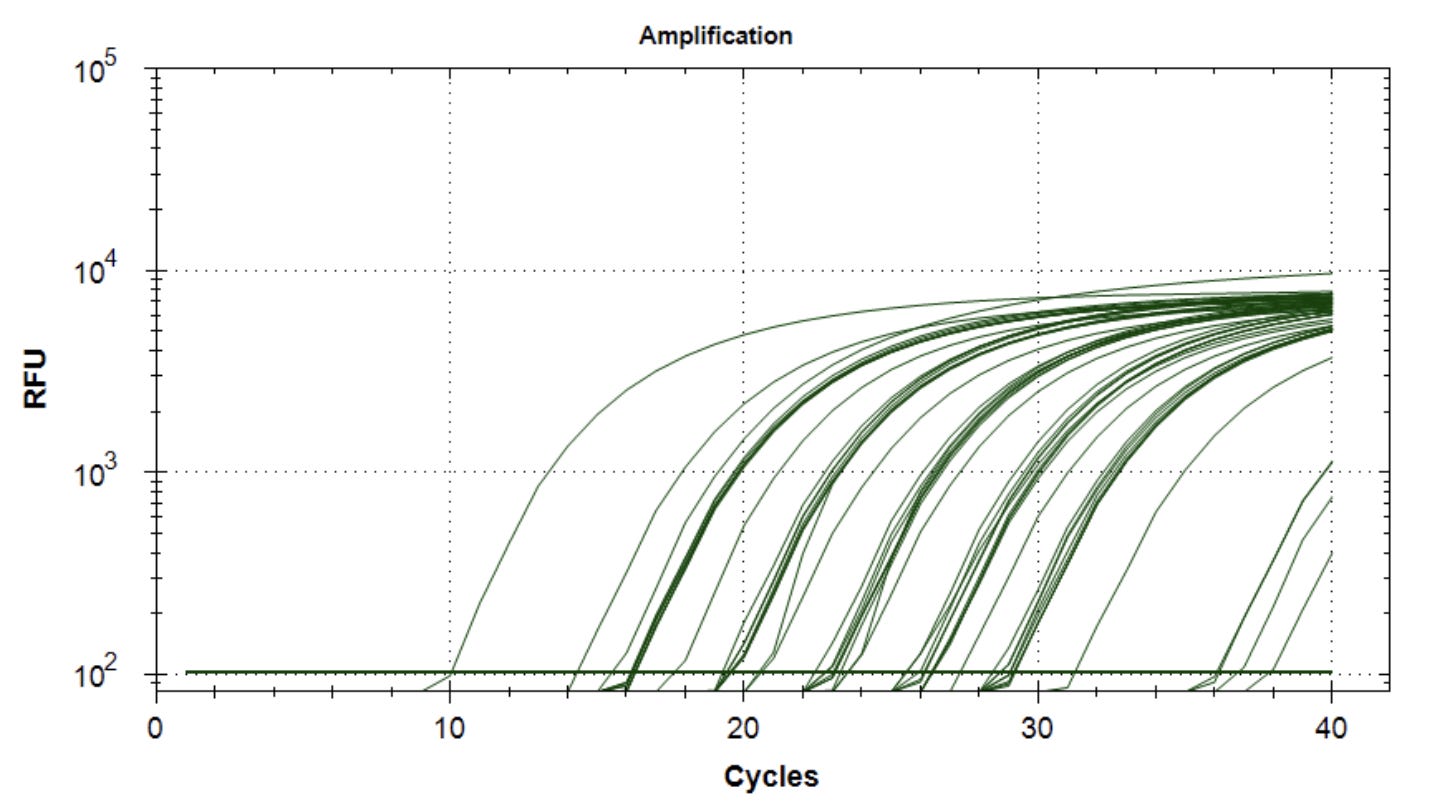
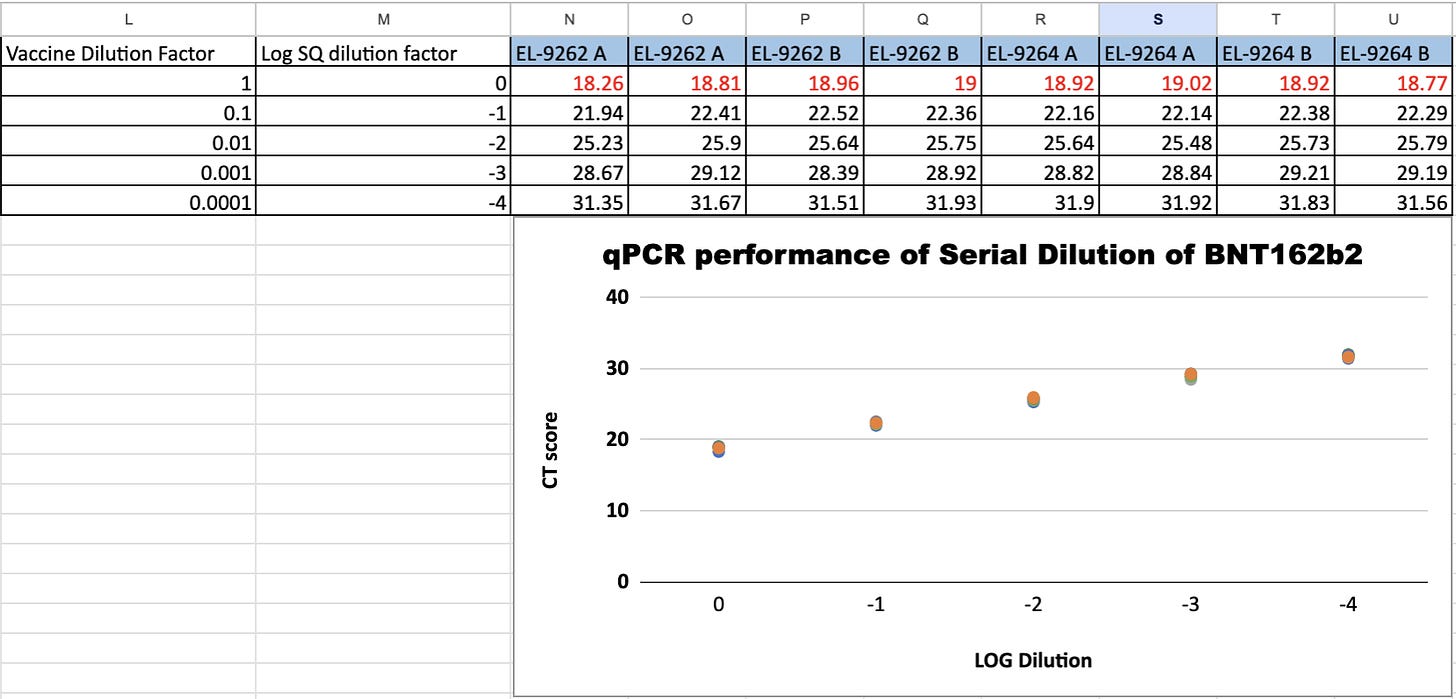



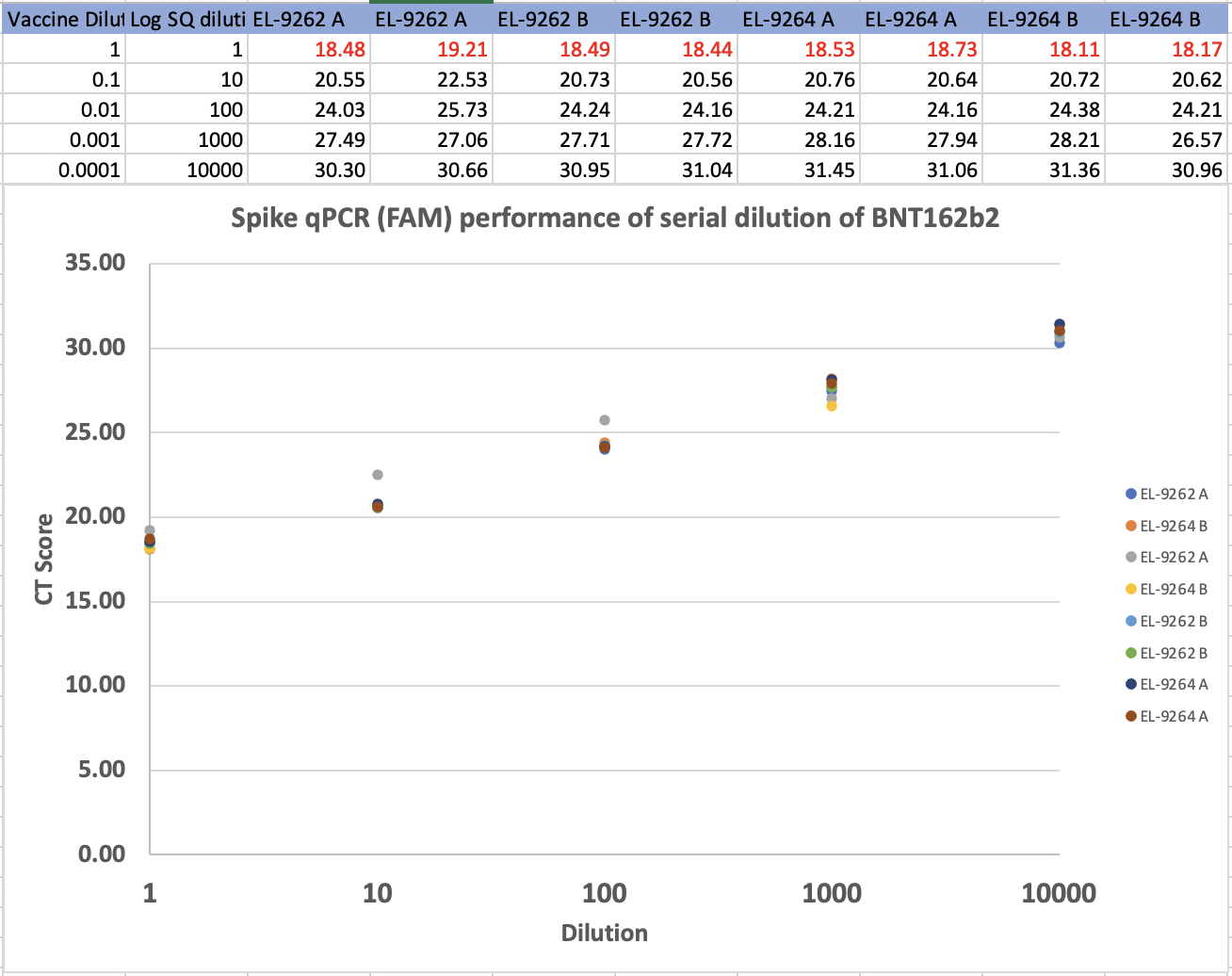
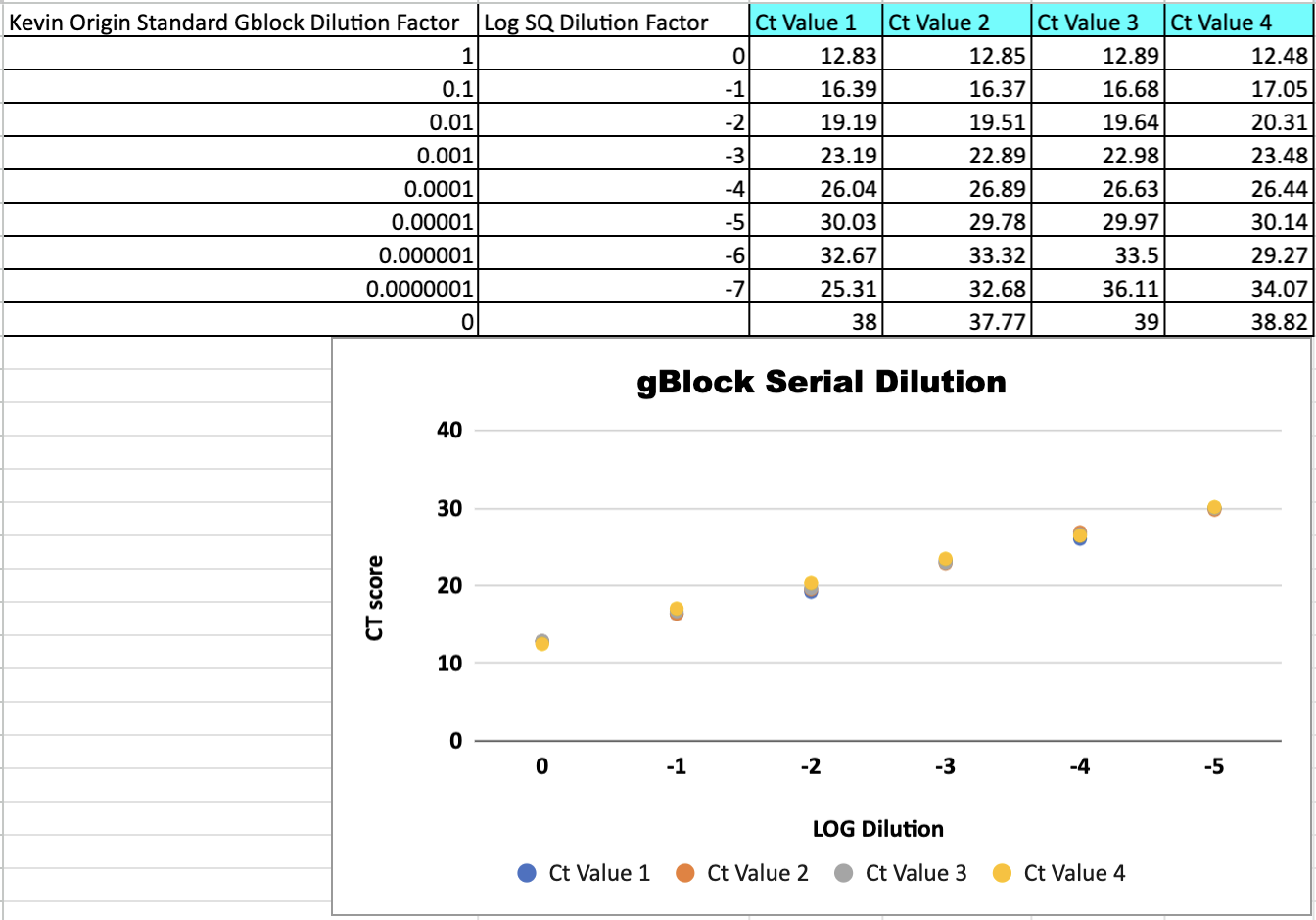
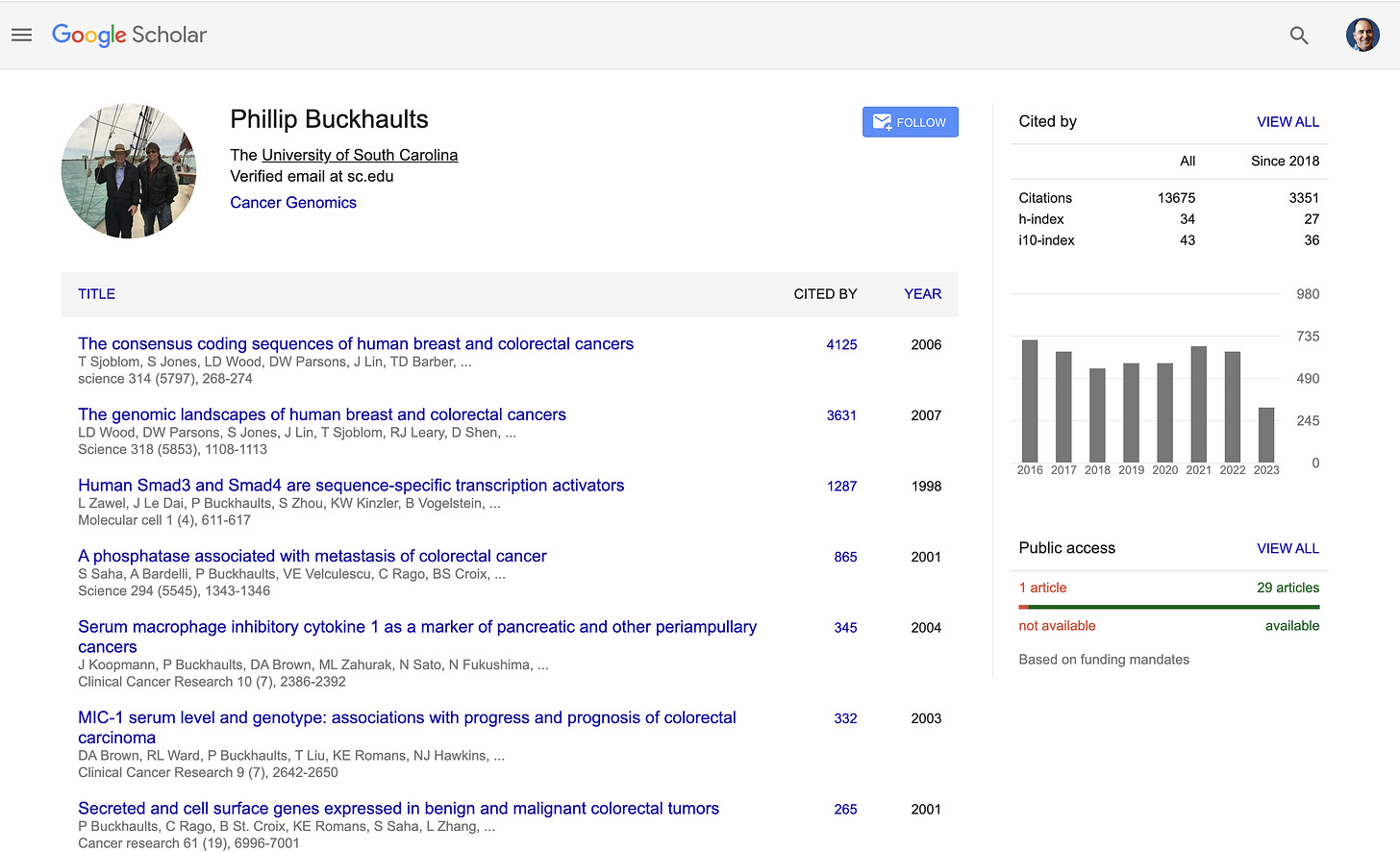
Thank you Kevin. Much better than peer review, as you have stated, reproducing your results at a number of different labs is the best validation. It's painfully obvious that the shots need to be stopped immediately. Are any "leaders" paying attention? Peace.
Thank you for this report. Do they know what does the DNA code for?
Not expecting any response here, never got one from this substack author. Not sure if asking about the -Pro-Pro- sequencing section, which should be ONLY in the genetically modifying injections replacing the natural -Lys-Val- dipeptide (in the official NIH published data), is maybe inappropriate or who knows what the real reason for no answer is... This answer would tell us though, if there are any naturally covid infected individuals with a Spike different than the injected one...